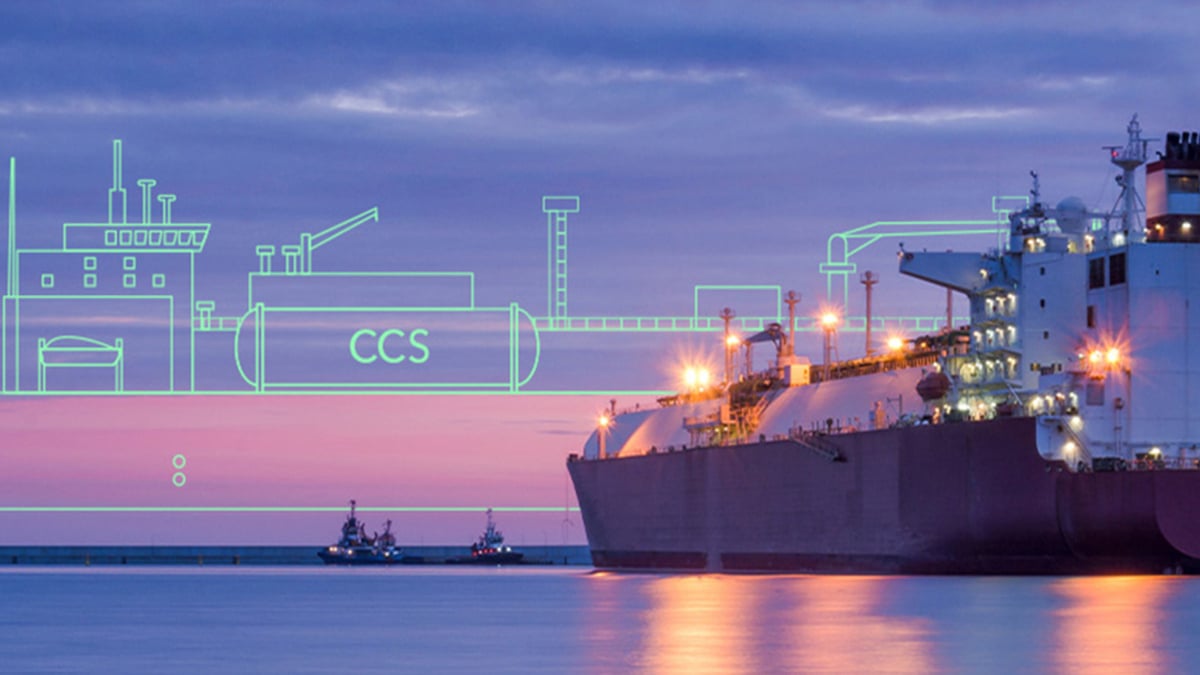Riviera – News Content Hub

DNV has published new guidelines for the safe installation of onboard carbon capture and storage (OCCS) systems on board ships, amid growing pressure on the shipping industry to develop effective technologies to reduce emissions as part of the ongoing maritime energy transition.
Post-combustion OCCS on board trading ships is expected to be among the most relevant methods of reducing greenhouse gas emissions on vessels where the use of alternative fuels is not feasible.
Several shipboard carbon capture efforts are either already underway or set to come online in the near term.
DNV’s new guidelines are designed to be used by stakeholders across the value chain, including ship designers, builders, OCCS system manufacturers and shipowners, and apply to both newbuilds and retrofits. They cover all aspects for safe installation, including exhaust pretreatment, absorption with the use of chemicals/amines, after-treatment systems, liquefaction processes, CO2 storage and transfer systems.
DNV head of maritime R&D and onboard CCS manager, Chara Georgopoulou said, “While CCS technology is already known in land-based industry, its application on board ships is relatively unproven. Our guidelines provide a framework for installation, offering support for stakeholders in the industry, while contributing to reducing emissions and driving the maritime industry towards a more sustainable future.”
“Our new guidelines for onboard OCCS systems aim to support the industry as it faces strict requirements for emissions reduction. A focus on safety is crucial for new technology and must be prioritised as the industry looks to adopt sustainable fuels and CCS installations.”
The guidelines are based on DNV classification requirements but additional technical or other requirements may be imposed by relevant flag-state administrations.
There are currently no statutory regulations addressing the possible safety implications of using OCCS systems on board ships. The guidelines also cover alternative means for carbon capture, including physical absorption and cryogenic methods and can be accessed here.
Meanwhile Lloyd’s Register (LR) awarded ERMA First an approval in principle (AiP) for its amine absorption-based CCS system.
ERMA First’s device uses absorption technology to mix CO2 flue gases with a proprietary amine solvent, which is then heated to produce a chemical reaction which reverses the absorption and separates the CO2 from the solvent. The CO2 from this process is then liquefied and stored under cryogenic conditions on board with the solvent ready to use in the same process again, creating a regenerative loop for CCS.
LR’s AiP, as part of the Risk-Based Certification process, has enabled the technology to achieve this important milestone and allows ERMA First to proceed with onboard pilot testing of the application, while LR continues to support its industry partners in derisking their maritime assets.
ERMA First managing director Konstantinos Stampedakis commented, “We are delighted to have received approval in principle from Lloyd’s Register for the ERMA First CCS system.”
“This AiP represents a significant milestone for our CCS project, and we look forward to continuing to work with Lloyd’s Register as we move into the next phase of this important project.”
